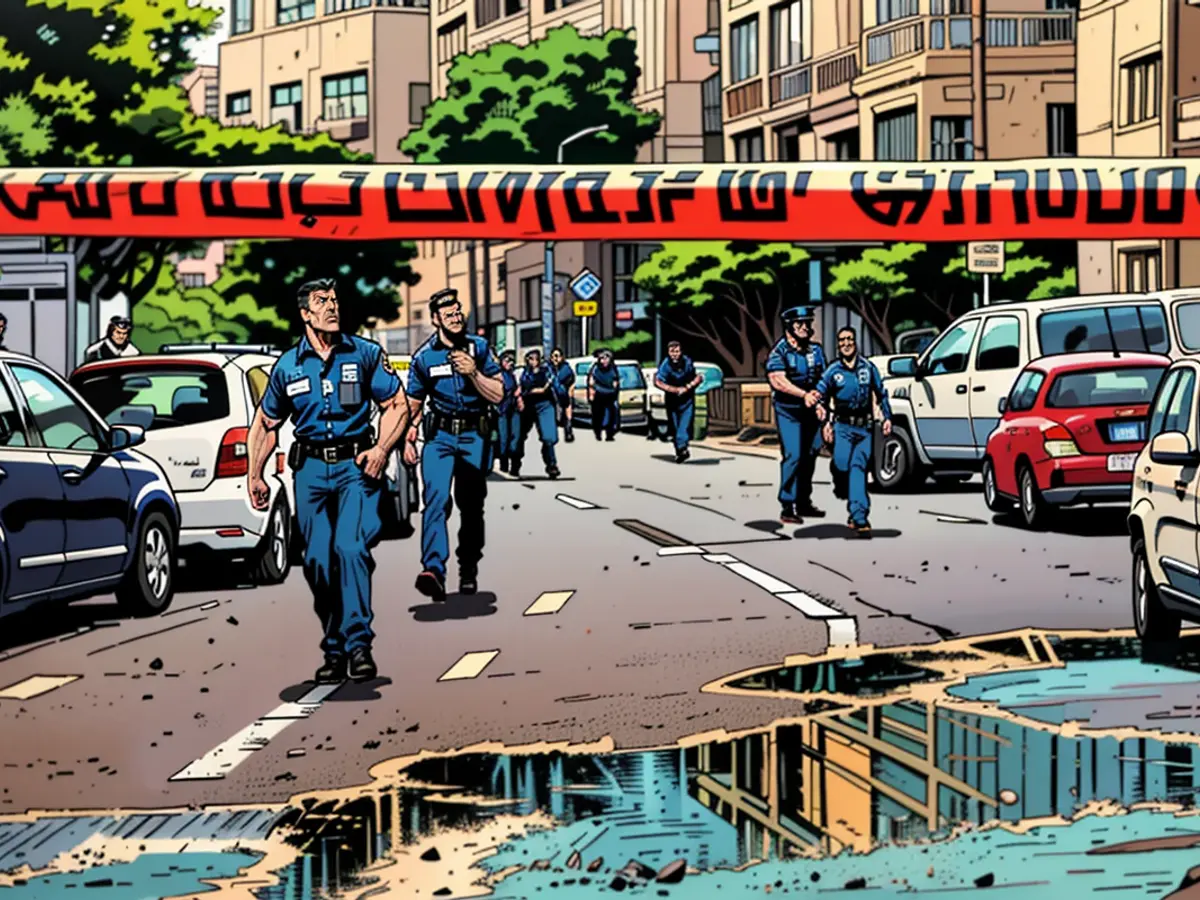A dead person at explosion in center of Tel Aviv - Huthis admit to drone attack
The Explosion occurred, according to rescue services, around 03.15 local time (02.15 CET). The police initially reported seven injured persons. A spokesperson for Magen-David-Adom stated that most of the injured were people who had suffered shock.
A police spokesperson reported that the explosion hit a building at the corner of Ben-Jehuda Street and Scholem-Alejchem Street - near a secondary building of the US Embassy. An AFP journalist saw shattered window panes. According to the police, a roughly 50-year-old man was found dead in his apartment at the explosion site, who had reportedly been injured by shrapnel.
"It could have been an explosion from the air," said Tel Aviv Police Chief Perez Amar at the scene. The investigations are ongoing. The fire department stated that it was possible that a drone had caused the explosion.
The army also reported that no sirens had been activated. The Air Force increased its aerial patrols to protect the Israeli airspace.
Initially, the army reported that the explosion was caused by the fall of an "air target," according to preliminary knowledge. Later, an army representative told journalists that "a large drone" had been launched in the attack, which "can cover long distances." He added that the Huthi Militia "is one of the possibilities." According to his statements, the drone had been detected but "a human error (...) led to the fact that the interception and defense systems were not activated."
The Islamic Huthi Militia, which controls large parts of the war-torn Yemeni coast on the Red Sea, claimed responsibility for the nighttime air raid. In a statement, their "Drone Forces" had reportedly targeted Tel Aviv. The attack followed an announcement on Saturday, in which the Militia declared that they would "not hesitate to expand their military operations (...) until the aggression stops."
The Huthis are counted among the Shiite Hezbollah in Lebanon and the radical Islamic Hamas in the Gaza Strip as part of the anti-Israel axis called the "Axis of Resistance," which is called for Israel's destruction by the Iranian leadership.
Since November, the Huthis have intensively attacked international merchant ships in the Red Sea and the Gulf of Aden. In response, the USA and Great Britain have attacked Huthi positions in Yemen several times in the past months. According to their own statements, the Islamic Militia supports Hamas in the Gaza Strip with its attacks on the important trade route to help Hamas, which started a large-scale attack on Israel on October 7 and thus triggered the war in the Gaza Strip.
According to Israeli reports, 1195 people were killed and 251 were taken hostage in the Hamas attack. In response, Israel has been conducting massive military operations in the Gaza Strip since then. According to the health ministry controlled by Hamas, which cannot be independently verified, more than 38,800 people have been killed since then. The war has been going on for more than nine months.
- The fire department was called to the explosion site to assist in the aftermath.
- At the incident's center, the fire department found debris and signs of a drone attack.
- The center of the explosion was closely examined by the fire department's specialists.
- The fire department revealed that the building at the explosion site sustained significant damage.
- The fire department reported that their efforts were focused on extinguishing any potential fires caused by the explosion.
- The call to the fire department was made after the initial explosion, and they arrived promptly.
- The fire department's response was crucial in managing the aftermath of the drone attack.
- The fire department's presence in Tel Aviv increased to support emergency services during the air raid.
- The fire department's assistance was essential in the rescue and recovery operations following the explosion.
- The fire department played a crucial role in ensuring the safety of civilians in the aftermath of the air raid incident.







